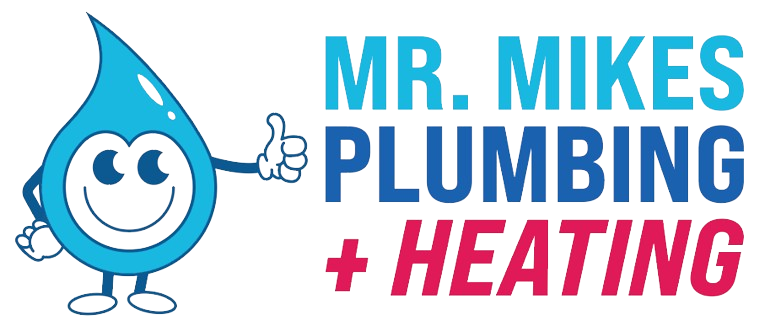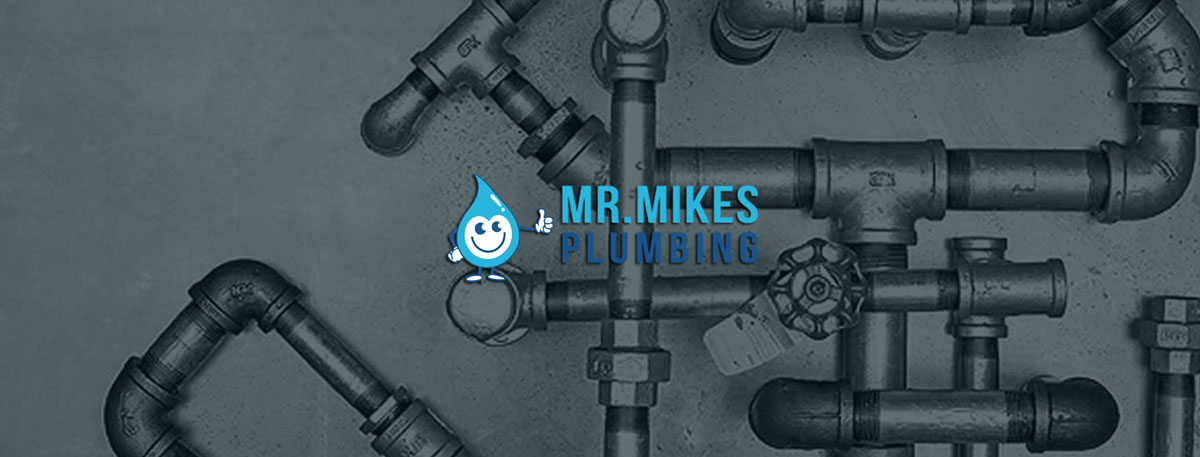
Holidays and Plumbing Problems
February 3, 2017
Valves & Faucets
February 4, 2017The advance in the scale of ideals with regard to plumbing has been so great that the design, installation, and maintenance of pipes and fixtures is no longer the work of the handy man, the lead worker, or the jack-of-all-trades. A plumber, to deserve the title and to receive the respect of his associates, must be trained in the art of his trade and the manipulation of his tools. He must have knowledge of the natural physical laws affecting the materials he uses and the installations he makes, legislation affecting plumbing, and business methods and procedure. In brief he must be a mechanic, a physicist, an architect, an engineer, a builder, and a business man.
The purpose of plumbing
A plumbing system is installed in a dwelling or other building for the primary purpose of convenience and comfort. The supply pipes of the system bring a wholesome water supply and the drainage pipes carry off the used water. Sanitation and health as well as convenience and comfort, are served, and, because of the possible damages to health resulting from impure water and improper drainage, care and knowledge must be exercised in the installation of plumbing.
A wholesome water is supplied to most buildings by the municipality. The quality of the water is under the supervision of the local and state health authorities. The waste water is discharged into the common sewers where it is also cared for by governmental agencies. Where the public water supply is not wholesome or no public water supply is available or where no common sewers are available, private filtration of water and attention to proper sewage disposal become necessary and the plumber is called upon for information, equipment, and service in these matters.
The householder at home and the citizen in the public building are accustomed to and demand types of plumbing fixtures and installations unknown a generation ago. The condition of plumbing even in so short a time ago as the span of one human life would not be tolerated today; its installation would be illegal. In spite of the many outstanding advantages of plumbing installations some disadvantages sometimes accompany the installation of pipes in a building.
The presence of pipes in a building present two dangers: one from the bursting of pipes under pressure which may destroy property, and the other, more subtle but none the less real, the escape of gases or sewage from the drainage pipes, which is dangerous to life and health. With care in design and maintenance both of these objections to the presence of plumbing in a building can be overcome.
Objections to plumbing
The danger from bursting pipes can be minimized by the use of proper materials, proper design, and good workmanship in installation. It is a real danger to property and must be carefully guarded against. The danger to health from sewer gas resulted in a bitter controversy over its reality.. Cases are cited of men who have worked in sewers for long periods of time without deleterious effect upon their health, and cases are cited of the asphyxiation of men entering a manhole. The situation might be summed up in the statement that there are no scientific data to prove or disprove the so-called dangers from “sewer gas,” but in view of the uncertainty of the matter and the extreme danger which may result from admitting such gases to our homes, the greatest care should be exercised in excluding these gases. Not only may the odours be dangerous but the thought of their presence is repugnant and unpleasant and hence they must be excluded.
Purpose of traps
Odours, insects, and vermin from the sewer are prevented from passing into a building through the plumbing pipes by means of traps which are filled with water. It follows, therefore, that every opening from a building into a plumbing system which is connected to a sewer pipe should be trapped in such a manner as to maintain a permanent seal.
The maintenance of the seal of the trap offers difficulties which add materially to the cost of plumbing installations. The seal in a trap may be destroyed by evaporation, by blowing or sucking out the water as a result of the variations in pressure in the plumbing system, or the seal may be lost when water, discharging through the trap at A, high velocity, does not fall back sufficiently to maintain a seal in the trap.
Purpose of venting
The purpose of a vent pipe is to conduct air, at atmospheric pressure, to the lower leg of a trap, i.e. the portion of the trap nearest the sewer. This connection to the outer air so reduces the effects of high or low pressures in the plumbing system as to aid in maintaining the seal of the trap.
No certain and safe method has been devised to prevent the evaporation, in time, of water from any trap. The evaporation is so slow compared with the frequency of the use of fixtures in occupied premises that the seal is renewed with sufficient frequency to assure its maintenance. In unoccupied premises the traps should be emptied of water and refilled with kerosene oil or other material which evaporates slowly. Unfortunately, vent pipes serve to increase the rate of evaporation from traps as they furnish a constantly changing supply of fresh air to the surface of the water in the trap.
Plumbing Codes
The installation of improper plumbing may affect the health of the occupants of the building and create a focal centre of disease which will have an undesirable effect upon the public health. Such a situation is of sufficient interest to the public to require the regulation of plumbing by law. The police power of the state is invoked and upon this principle is based the right of the government to regulate the minute details of plumbing by means of plumbing codes. There are very few cities in the United States which do not have some sort of plumbing code and an inspector to enforce its provisions.
The aim of the plumbing code should be to cover every possible contingency which may arise in the installation of plumbing. A complete plumbing code is a lengthy document. Its enforcement is legal under the police power of the state and any builder should assure himself that his plans are in accordance with the requirements of the code. It must be admitted, unfortunately, that all plumbing codes are not perfect and that requirements are sometimes made which are unreasonable, unjustified, and harmful. When, in the comparison of two codes, it is found that one stipulates that a certain thing shall be done and the other positively prohibits it, one or the other must be wrong.
Plumbing codes are being improved, and during the past few years much attention has been given to their improvement. The credit for this situation can be given to Herbert Hoover, Secretary of the U. S. Department of Commerce, because of the preparation, under his direction, of the “Recommended Minimum Requirements for Plumbing in Dwellings and Similar Buildings,” hereinafter known as the Hoover Report. This contains a proposed standard plumbing code.
The simplicity of plumbing systems
A plumbing system reduced to its simplest terms would consist of one supply pipe leading to a fixture and one drain pipe taking the waste water away from this fixture. As the number of fixtures is increased the branching of the supply and drainage pipes is increased. As the kinds of water to be supplied are increased the complication of the supply piping is increased. Most fixtures have at least two supply pipes, one with hot water, the other bringing cold water. In some buildings soft water, iced water, and other supply pipes may be installed. When each water-supply system is considered independently the piping arrangements can be more easily understood and appear more simple.
An increase in the number of fixtures increases the complication of the drainage pipes and frequently requires the installation of vent pipes. When the purpose of these supply, drainage, and vent pipes is understood and each system is considered independently of the others a plumbing system, like most other things which are understood, appears simple and easily comprehensible.
Water-supply pipes
he water supply for a city home is ordinarily delivered through a pipe in the street. The pipe in the street is usually of cast iron, seldom less than 4 in. in diameter and usually larger. To this pipe, called the street main, is connected a galvanized-iron or lead pipe, called the service pipe. A valve, sometimes called the corporation cock, is placed close to the connection between the service pipe and the water main. Another valve is sometimes placed near the curb. This may be called the corporation cock or sometimes the curb cock.
The curb cock is used principally to turn water on and off without entering the building served. The service pipe continues through the basement wall of the building and usually terminates in a “stop-and-waste cock” near the basement wall and on the inside of the building. This “stop-and-waste cock” should be installed on the lowest point in the water supply piping in the building so that when the valve is closed all of the water in the supply pipes can be drained out.
The plumbing system within the building starts from this main valve or stop-and-waste cock. Figure shows a simple layout of the cold-water pressure pipes for a small dwelling house. A simple arrangement of hot-water supply pipes for the same building is shown also in the same figure.
Drainage and vent pipes
When water is supplied to a building, provision must be made to remove the waste water from the building. The pipes for this purpose are classified as drainage pipes. From many points of view their design and operation are the most difficult to understand because of the complications involved in the necessity for maintaining proper slopes for drainage and self-scouring velocities, proper pipe capacities, and proper sizes and arrangements of vent pipes to prevent the development of high air pressures in the plumbing pipes.
Water falling through vertical pipes and flowing through the horizontal drainage pipes will entrap, compress, and rarefy air. The air, in its attempts to escape from the vacuum or the pressure thus created may break the seals of traps unless adequate vent pipes have been installed. Vent pipes and drainage pipes are sometimes so closely related that they are sometimes classified together.
The sizes of vent pipes, their number, location, and other details have been determined for many years in the past as a result of the individual experience of different architects and plumbers, resulting in many differences of practice in various cities. Tests recently made at the U. S. Bureau of Standards,’ and at the University of Illinois have thrown much light on the question of venting and have made possible more intelligent design of the drainage and vent pipes of a plumbing system.
In the small dwelling shown, it is possible to install all of the plumbing without vent pipes.
Installation of plumbing
The installation of plumbing pipes, called the “roughing-in,” proceeds simultaneously with the erection of the building, since most of the pipes are concealed in the floors and walls thereof. The pipes must, therefore, be installed before the floors and walls are completed. Because of the necessity for correct installation the plumber must be able to read architectural drawings and to make sketches and sometimes drawings of his own to supplement the plans of the architect.
Usually the first step in the installation of plumbing is the connection of the service pipe with the water main, and the house sewer with the public sewer. The supports for the stacks are then placed and the stacks erected as the building rises. Water supply and drainage pipes are placed simultaneously, the branches following closely on the erection of riser pipes and stacks. All of the roughing-in should be completed before the walls are lathed or flooring laid. Fixtures, except built-in bathtubs and certain special fixtures, are installed after the completion of the flooring and plastering. Their installation, called the finishing, is among the last things done in the completion of a building.



